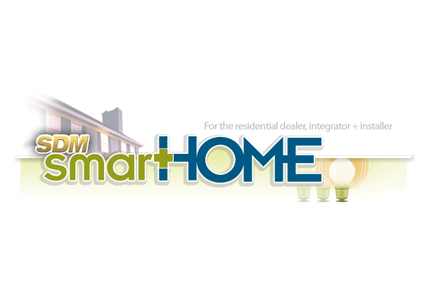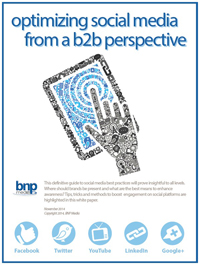To characterize the state of the U.S. economy as a rollercoaster would be a severe understatement. Over the past year, the news cycle has constantly rocked back and forth and every which way possible detailing swings of good and bad news.
Amid a backdrop of wildly unpredictable economic indicators, however, most experts can agree on one thing: the housing market has slowly but steadily rebounded. It’s important to note, though, that while homebuyers are coming back, the overall attitude is one of carefully wading back into the water instead of diving headfirst. Even people who are buying upscale homes are weighing their options very carefully, and the market for home automation technology is one of the best examples of this trend. High-end packages that enable whole-home entertainment and are priced into the tens of thousands of dollars still have a place and see sales, but more affordable options that provide basic functionalities such as the ability to control security, lighting and heating, ventilation and air conditioning (HVAC) are steadily cropping up and increasingly garnering attention.
And catering to these cost-conscious homebuyers presents an opportunity to CE professionals charged with helping home builders find new ways to affordably differentiate their offerings. For an example of this using Honeywell Tuxedo technology, read “Builder Differentiates New Homes with Automation/Security Offering” on sdmmag.com.
Generally speaking, three key factors have greatly helped in bringing these new types of automation capabilities closer to home: the emergence of Z-Wave wireless devices, Wi-Fi technologies that have significantly simplified installation, and more sophisticated security technologies that increasingly are forming the cores of these systems.
Here Comes the (Z)Wave
The emergence of the Z-Wave wireless protocol for home automation over the last few years brought an intriguing alternative to the more traditional and far more-intrusive structured cabling cabinets that can serve as a central nervous system of high-end connected homes. While there is still a large market for those cabinets, another market for Z-Wave is establishing itself. According to the Z-Wave Alliance, for example, more than 12 million Z-Wave products have been sold worldwide.
In particular, the technology has carved out a niche with its ability to offer energy-saving home automation features. Some of the more popular Z-Wave features include:
- Precise temperature control — Z-Wave thermostats can automatically adjust every time a homeowner arms or disarms the security systems, for example, letting them enjoy convenient comfort and energy savings thanks to fewer temperature swings.
- Thermostat “lockouts” can keep temperature limited to a minimum or maximum setting, which is ideal for families with small children who can tamper with the thermostats.
- Fan circulation — this feature engages ceiling fans to move air when heating or cooling is not required, which of course saves energy by helping to eliminate hot or cold spots. Additionally, ceiling fans can be automated to run on or off when homeowners arm or disarm security and be programmed for specific times and work in conjunction with lighting.
- Shades can be automated for privacy, security and energy savings by raising them and lowering them at specified times.
The ability to automatically set back thermostats, for example, can shave up to 15-20 percent off a monthly energy bill. Those are the types of figures that truly start to peak a prospective buyer’s interest.
“Buying a home translates into monthly utility bills,” said Stephen McKenna, president of Pennsylvania-based Mignatti Cos. “Energy efficiency is important to today’s homebuyers, so it needs to become part of what we sell. It’s a new reality for any home builder that wants to be known as eco-friendly.”
Why Not Wi-Fi?
Much like Z-Wave simplified the process of interconnecting subsystems such as locking, lighting and HVAC, the use of Wi-Fi has also opened an easier route to installation. This is especially true with the security element of newer home automation systems.
The use of Wi-Fi means installers no longer require the traditional CAT6 cables needed to connect alarm panels to the Internet. Establishing that Internet link is critical because connectivity has become a standard feature — homeowners today expect to have the ability to control their security systems from Internet-enabled devices such as smartphones and tablets.
In fact, any solution that doesn’t involve the capability to control and manage the system using a mobile device is considered sorely outdated. For all practical purposes, this makes home-automation features such as a built-in Web server a necessity for builders looking to cater to the modern consumer lifestyle.
“In the past, our technicians would need to drill holes and fish wires, sometimes taking days to complete an installation in an older home, again proving the benefits of Wi-Fi communication and quality wireless alarm devices,” said Andy Soloski of JM Resources, a local integrator working to provide the Tuxedo Touch at Mignatti’s Golf Club Estates in Bucks County, Penn. “Honeywell has done a fantastic job with their new line-up of products.”
Simplifying installation this way, however, also means retrofits have become easier propositions — with so many consumers electing to remodel existing homes rather than build new construction, this Wi-Fi-enabled ability is a crucial one.
“Wi-Fi and quality wireless devices have changed the entire retrofit market. We can offer all sorts of quality protection and convenience devices to our clients with little concern about the uncertainty of fishing walls/ceilings during the installation,” Soloski said.
Security as The New Lifestyle Technology
Security technology was once largely considered an afterthought in the realm of home automation. Flashier features such as whole-home audio and automated appliances were always sought, but security — for lack of a better term — was dubbed the “boring” part of the system.
That mentality began to shift greatly, however, as security system management became possible using Internet-enabled devices. Today, leading with security as opposed to other home automation subsystems has become the most-effective strategy for tying everything else together. That’s because the security system is the only device in the home that knows when someone is there. It supplies that critical piece of information to the automation system, letting the thermostat know when to go to energy saving setback mode, when to lower the shades, control the lights or even shut off the ceiling fan.
For example, simply arming or disarming a security system can serve as the trigger point for the system to engage indoor and outdoor lights, create locking schedules and receive emailed alerts when a person enters the home, such as a child returning home from school. All of this is in addition to the round-the-clock surveillance that can be accessed through mobile devices when products such as wireless security cameras are incorporated into the system. Systems like Tuxedo Touch, for example, allow live video of up to four local cameras per screen, which can be viewed on the touchscreen interface, smartphones, tablets or televisions.
This type of functionality can help builders readily offer their buyers the ability to keep a watchful eye over valuables, pets, nannies, elderly relatives, outdoor areas and more from any location.
“Allowing the plumber to come in and repair a leak without having to a take a day off work, or knowing that your kids came home from school, you can literally monitor your entire home,” McKenna said.
Integration with systems such as locks takes this a step further and allows them to unlock the front door, for examples, for a babysitter or housekeeper at the same time every week. Other examples of integration include setting lights to turn on when a security alarm is tripped, or set shades to close every time the family leaves the home and arms the security system.
Does Smart Home = Smart Investment?
Since the beginning of 2012, McKenna said Mignatti has been increasingly enthused about the number of prospective buyers it has seen come through its doors. Even more encouraging than the numbers, though, is the seriousness of the buyers.
“With historically low mortgage rates, more homebuyers are seeing the value of an investment they can make today,” he said.
Added Soloski: “Customers buy new homes so that they are current with advancements in technology. From exterior/interior surfaces, insulation, HVAC, plumbing and perhaps the most often-changing — electronic devices — builders can offer outstanding value in a brand new home.”
Buying a home may very well be easier today than it has been in a long time. Affordable home automation technology, driven forward with Wi-Fi, Z-Wave and smarter security technology, may be the key to selling an easier (and safer) lifestyle to go along with it.








